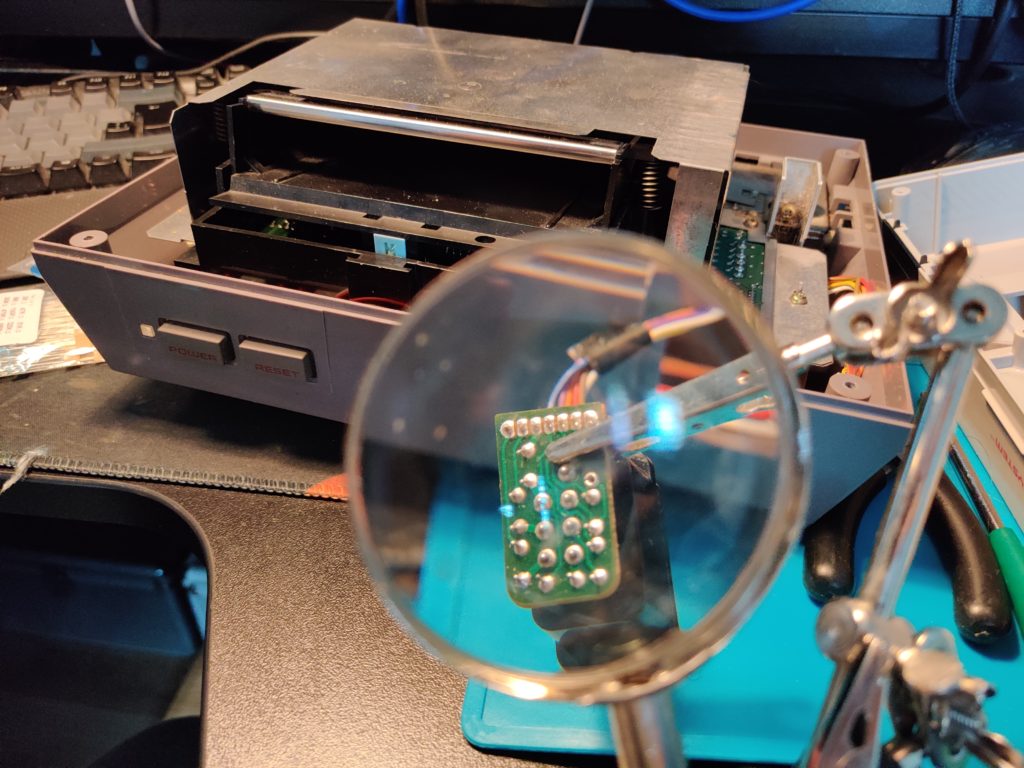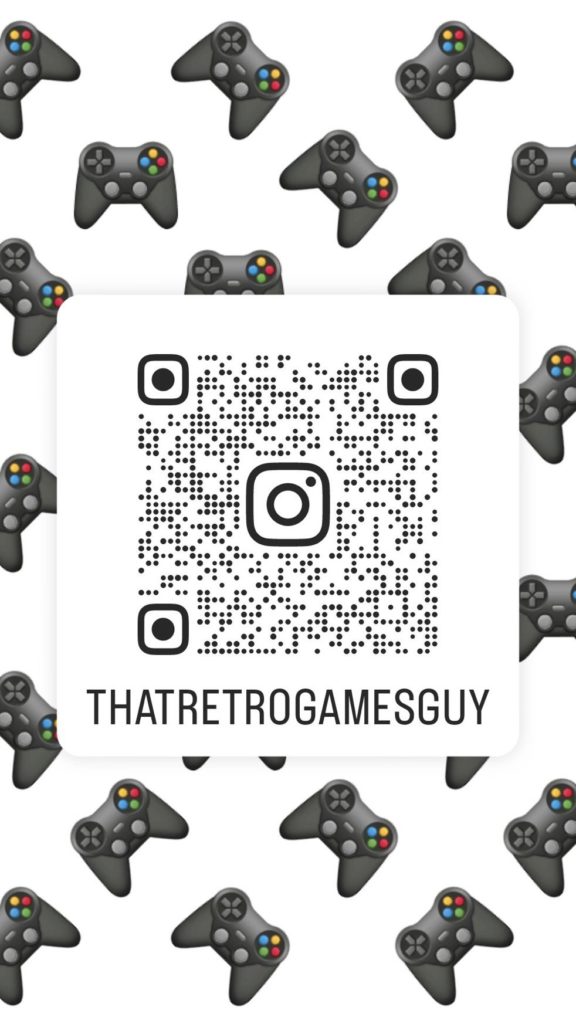I have always been an Amiga user/fanboy. After my Atari 65 XE which I got at a very early age, and before I was even aware of what the landscape of home computers was at the time, I got my first Amiga 500. Boy did I fall in love with it! Then came the Amiga 1200 and then … well … the Amigas died and I had to move on.
At the same time, the main rival of the Amiga for its price range was the Atari ST. I did not know much about the ST back then, only that it was an inferior machine when it came to graphics capabilities compared to the Amiga, and that it came with MIDI interfaces built in. Not that I knew exactly what that meant, but in my mind the Amiga was superior when it came to graphics and the Atari had more capabilities when it came to audio. Well, I was wrong on that part since I only recently discovered that the Amiga was ALSO vastly superior at the audio department, with 4 PCM channels, as opposed to 3 FM channels (based on the AY-3-8910 audio chip also used in many 8 bit computers like the Amstrad CPC and the ZX Spectrum as well as some old arcade machines like 1942 and Frogger and only had synthesis capabilities and no samples).
But enough about the history lesson, this is not what this blog post is about. Since I recently got my first Atari ST computer (an Atari MEGA ST 2) I am starting to learn a few things about it and how everything worked in Atariland. My ST came with a monochrome monitor, capable of a 640×400 black and white image and not much more. This was a very high resolution for the time and the Atari OS (TOS and GEM) looks very crisp on it, despite the complete lack of color. The only issue was that my OS was in German. While I occasionally like German and speak it a bit, I do prefer my OSes to be in English. But looking into how I would change that, I discovered that in Atariland, the OS is in ROM on the motherboard. Oh well, time to get my trusty screwdriver and open it up.
After ordering a new set of English TOS chips (TOS 1.04 which was the last version released for non Enhanced versions of the ST – the E in STE models), waiting for a few days (installing a Gotek inside the ST while waiting) they are here. Time to replace the ROMs!
Looking around inside the Mega ST, I found the 6 chips that needed replacement, next to the mighty 68000 CPU. Thankfully, the chips were not soldered to the motherboard but rather sat on sockets so they could be easily removed and replaced.

Removing them was rather simple, trying not to bend their little legs too much so that they broke. This is what they looked like after being removed.
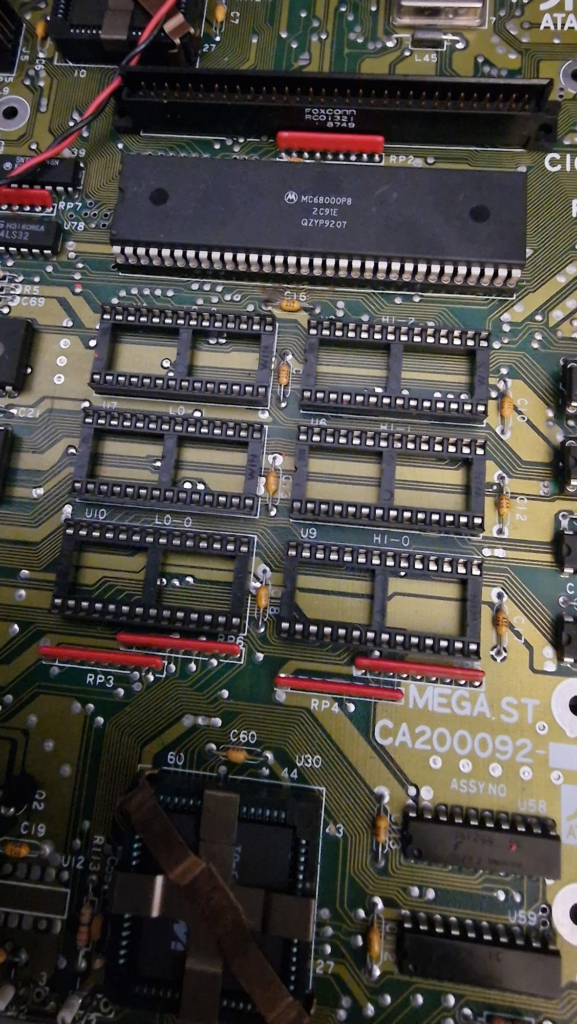
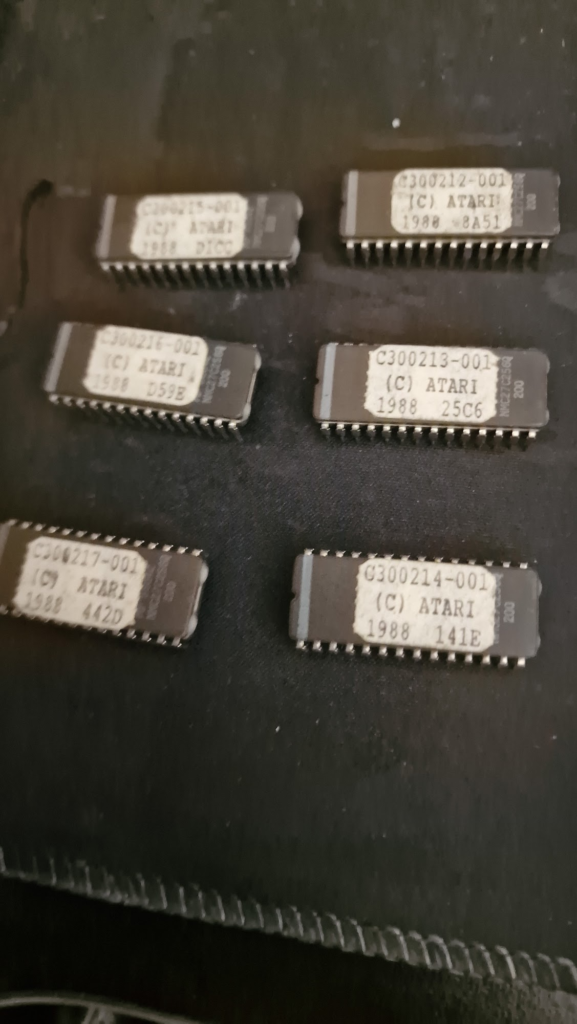
Putting the new chips was even easier. Just align the legs and push gently and evenly down.
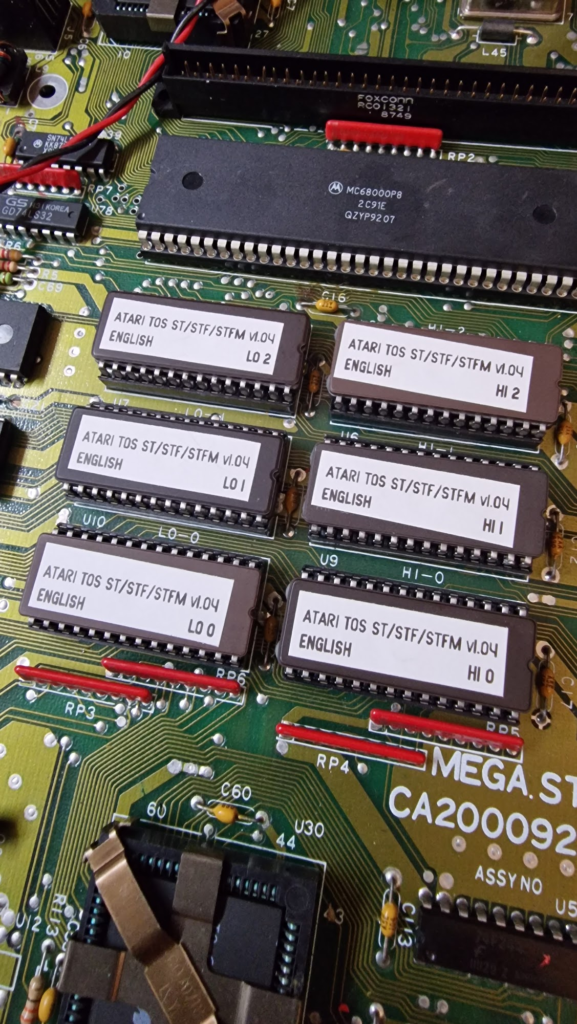
Power on and … nothing. No fan spinning, no Gotek getting power. Nothing. This was a scary moment until I realized that I had relied too much on the labels orientation to notice that there is a notch on the side of each chip which has to match the notch on the motherboard chip sockets.
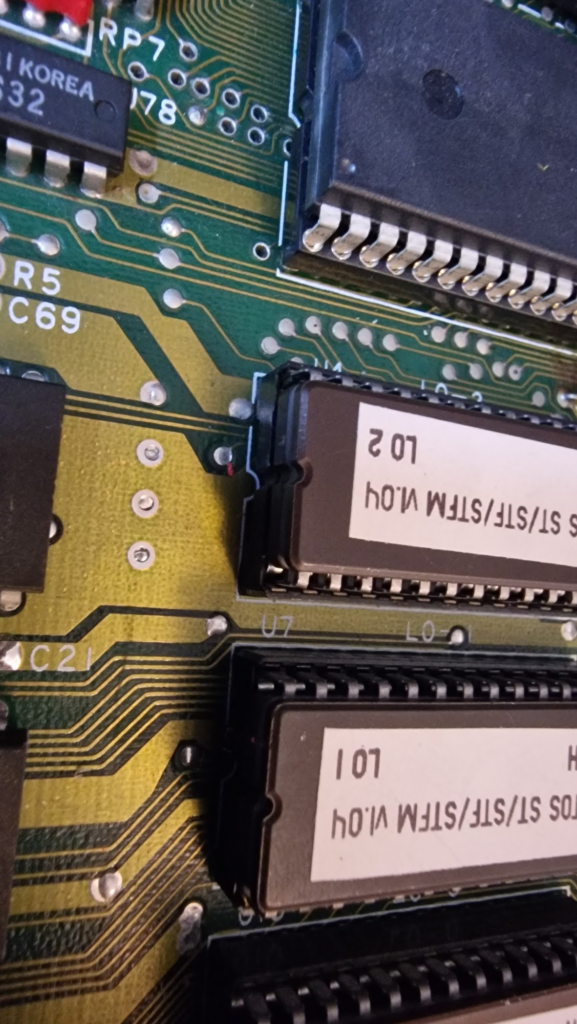
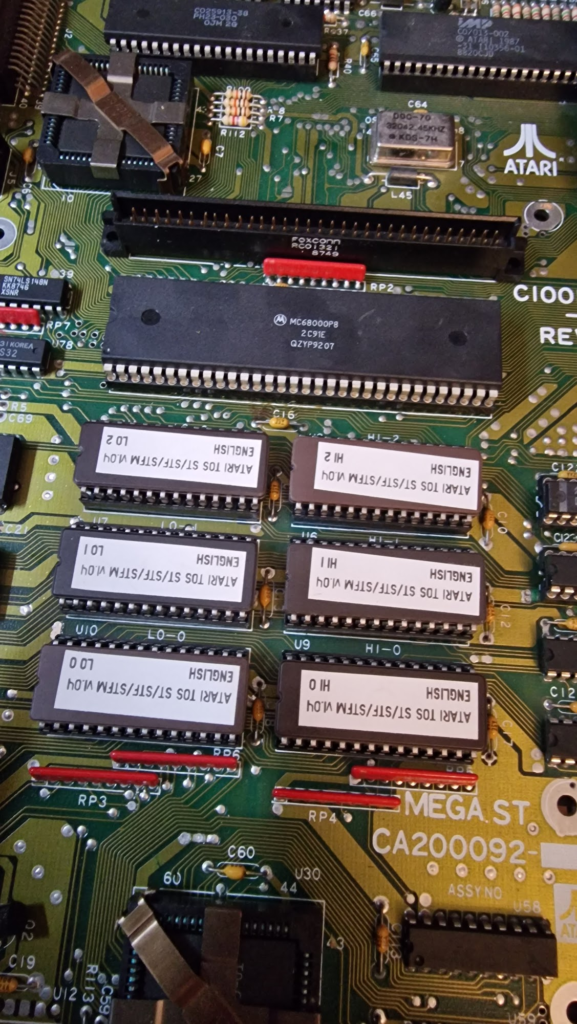
After removing them once more, and placing them back correctly, it was a success and TOS is now in English.
So success!





